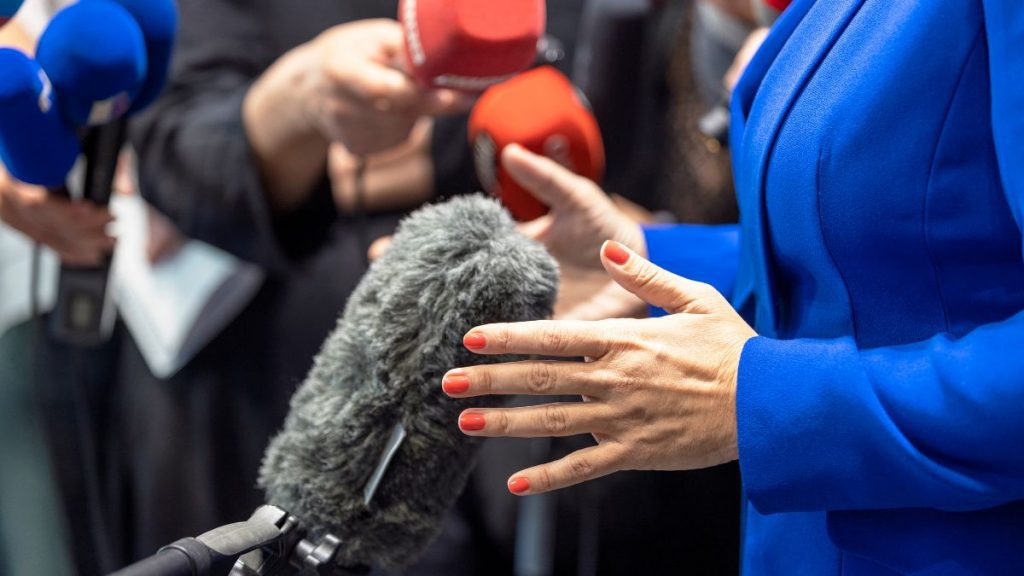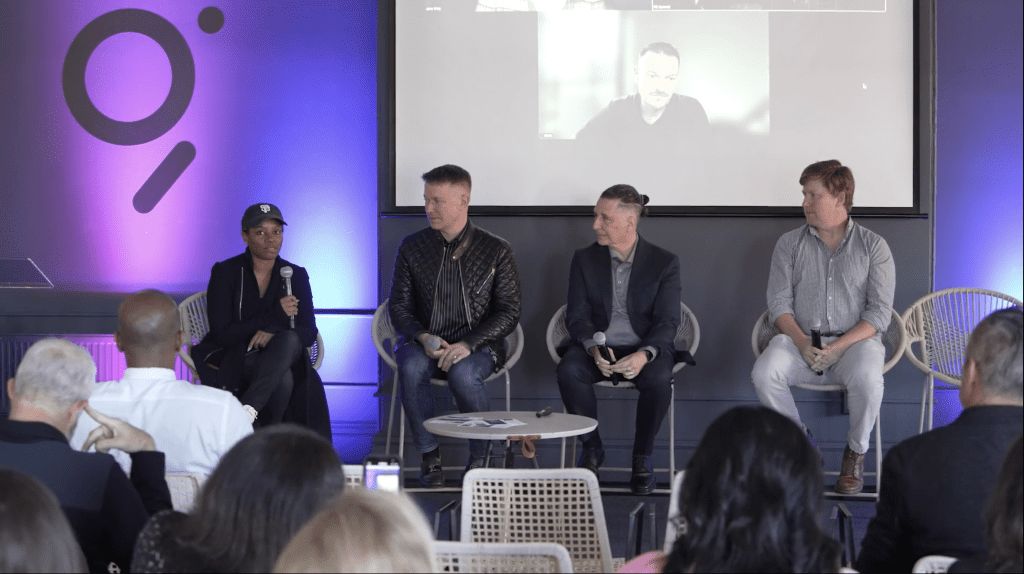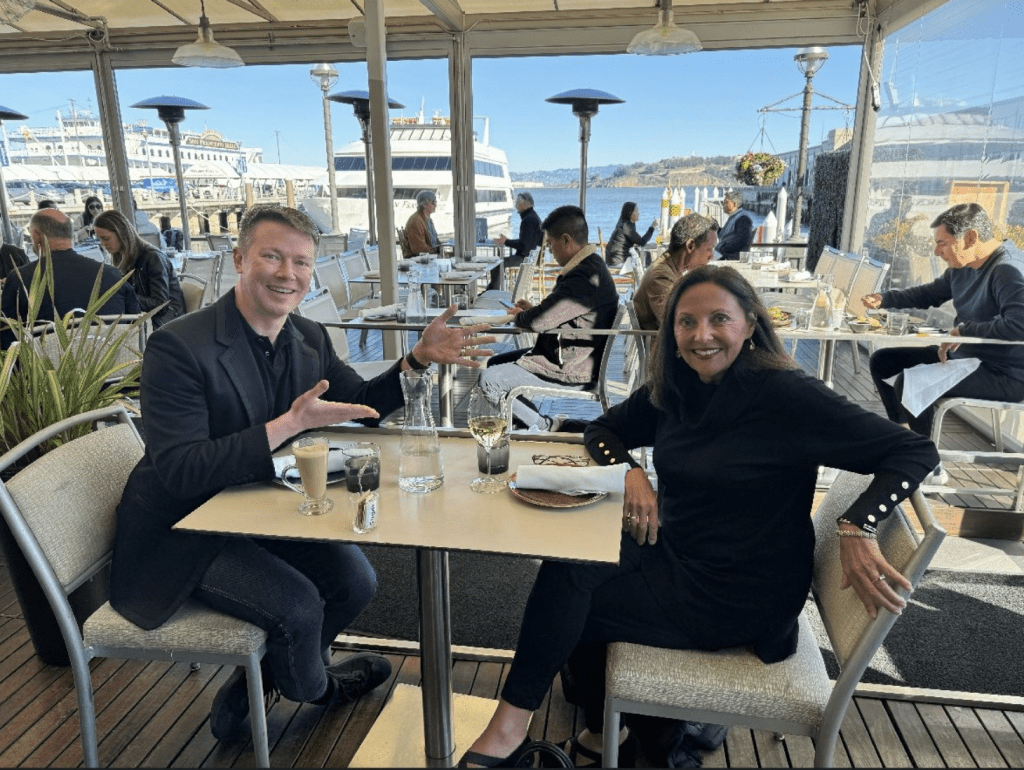Tariffs and trade policy changes can rattle even the most seasoned comms teams. This month, we’re diving into how companies can approach the topic with clarity, confidence and credibility. Whether you’re fielding media questions or preparing for supply chain disruptions, we’ve got you covered with actionable PR guidance.
Lead Story: The PR Dos and Don’ts of Talking About Tariffs
Tariffs are complex—and so is talking about them. While your company might not face a $900 million impact, like Apple is predicting for this quarter, the effects are widespread. This feature breaks down how to communicate clearly, avoid panic and protect your brand reputation. We pulled recommendations from two of our media training experts, Eric Chemi, former CNBC and Bloomberg journalist and our resident podcast host and Stacey Grimsrud, Bospar VP and an expert in media training and crisis communications.
Key takeaways:
- DO speak plainly about business impacts.
- DON’T speculate on future policies or outcomes.
- DO show empathy for all stakeholders.
- DON’T default to “no comment” — have a prepared statement ready.
Generate Opportunity from Chaos
The best leaders turn disruption into opportunity. The tariffs do present an obstacle, due to the political entanglements and the poisonous rising costs storylines. However, PR tactics can use the tariffs to reinforce transparency, leadership and resilience. They can also help avoid missteps, like the backlash Amazon received from the administration when the ecommerce giant considered displaying tariff costs for some of its low-cost items. Despite Amazon disputing these claims, the White House reacted aggressively, stating it was a “hostile and political act,” reflecting the sensitivity around tariff discussions.
- Frame the story, showing how you manage the supply chain and support workers.
- Use content such as op-eds, contributed articles and blog posts to explain the reasons behind changes to your operations, sourcing or pricing strategies.
- Advocate for your industry and its interests by leading a coalition and then communicating your efforts.
Stay on Message to Present Strength
Eric recommends keeping political or motive-based discussions out of the conversation, and keeping the narrative focused on your company. For CEO spokespersons, he suggests:
- Present tariffs as a distraction that will not sway the company from building and delivering.
- Stating the company can only control how it adapts to market conditions, it cannot control policy.
- Crafting a narrative of stability. “We’ve built our supply chain with flexibility in mind — this isn’t our first curveball.”
- Focusing on quality. “If this impacts costs, we’ll be honest about it — but we’re not cutting corners.”
- Our partners are on board. “We’re having real conversations with our partners, so no one’s caught off guard.”
Use Bridging Techniques to Guide Conversations
Stacey suggests the key to avoiding risky waters is to know your key message, figure out what you want to say and then drive the conversation around that point.
She encourages her clients to use bridging to navigate tricky conversations. Bridging is a technique of transitioning conversations (politely and subtly) toward what you want to talk about and setting up the talk so you can communicate succinct key messages.
Bridging in action:
- Redirect your response to an undesirable question. You can say “That’s not my area of expertise, but I think your audience would be interested to know that…”
- An interview is not a command performance. By knowing your key message in advance and using bridging, you can steer the conversation back to safety and obtain more desirable coverage.
- If someone asks your executive to speculate on the future of tariffs and their impacts, encourage them to respond, “Instead of speculating, I can relay these facts…” to support their key points and enhance credibility.

Prepping the Executive: What to Say (and Avoid) in Tariff Interviews
With the tariff uncertainty and angst, your execs are likely to face tough questions from media and stakeholders. This climate comes as both customer and business sentiment remains negative. Chris Williamson, chief business economist at S&P Global Market Intelligence, said in an article in Retail Dive, “The upbeat mood seen among U.S. businesses at the start of the year has evaporated, replaced with a darkening picture of heightened uncertainty, stalling business activity and rising prices.”
How can your executives manage the doom and gloom, while taking advantage of limited media opportunities without slipping into risky territory? By conducting media training that helps your executive team answer questions transparently and effectively while protecting your brand.
Key takeaways:
- Focus on resilience and business strategy, not politics.
- Avoid “off the cuff” commentary — stick to messaging.
- Use examples to ground your points in reality.
- Use neutral, facts-based language
Both Eric and Stacey encourage executives to speak honestly while staying on brand and keeping the company’s strategic mission top of mind at all times. They also suggest coordinating messaging across the organization, so the VP of sales, the CISO and everyone in between have the same guidelines for discussing the tariffs and their impacts. You can also loop in your legal team to ensure you’re not stepping on any landmines or might upset key partners during your tariff discussions.
Here are some strategies for saying the right things, and avoiding the big blunders during a tariffs talk:
What NOT to Say in a Tariff Interview:
- We’re just figuring it out.
- We’ll pass the costs to customers. This is tone deaf (even if it’s true).
- It’s just a story about country vs. country narratives or trade partners. Instead stick to company strategy and looking out for customers, not geopolitical concerns.
- The sky is falling! So we’re stopping all new investment and development! Keep an even tone that isn’t too alarmist or overly optimistic. Don’t show panic or instability.
- Don’t pretend you’re an economist, even if you understand the tariffs well. You’ll get boxed in or quoted out of context.
- I need to rant! Don’t use the conversation as a forum to express frustrations; focus on the brand, customers and measured moves you’re making. Don’t blame anyone, it makes the company look reactive.
What to SAY Instead:
- We have a plan! If you’re making short-term changes, reframe them as long-term strategic planning, not abrupt moves due to tariffs.
- Here are the facts. Point to broader industry or economic trends in a neutral manner, without sounding defensive or sticking your neck out; you don’t want to come across as a company that’s out of step.
- We’re making smart moves in response. Highlight investments the company made or might make in terms of diversification, shifting to domestic operations, etc.
- We recognize customer concerns and will acknowledge them directly.
- We recognize and will be honest about how this will impact costs, but we are not cutting corners regarding quality, dependability or safety.
- It’s early to know the long-term impacts, so we’re conducting research into our models to gauge the downstream tariff impacts.

Crisis Comms Checklist: Managing Tariff-Related Disruptions
Tariffs can shake up your supply chain, pricing models and customer confidence — sometimes in the blink of any eye. Here are tips to stay ahead of the chaos with a solid comms plan.
Key takeaways:
- Communicate early and clearly. Silence creates confusion and mistrust.
- Be transparent, but careful with details.
- Keep your teams in the loop — especially those dealing directly with customers.
- Frame the story with empathy, not just economics.
- Revisit and revise your strategy as the situation changes.
- Focus on long-term trust and customer confidence.
Communicate Early and Often
Don’t wait until customers are frustrated due to supply chain delays, shortages and price hikes or the media start to ask questions. Get ahead of the narrative — even if the situation is still unfolding or remains dynamic.
- Craft a simple message: As details evolve, acknowledge the situation, note what’s known (and unknown), and determine how you’re doing to respond.
- Set a cadence: Share updates regularly. Even a quick “no major changes this week” message builds trust.
- Localize the impact: Explain which products, regions or services are affected, and what’s being done.
Example: “Due to newly announced tariffs, we’re seeing extended lead times for select products. We’re working closely with our suppliers to minimize disruption.”
Align Internally
Don’t assume your employees know what to say. They need to be equipped with the right language so they are confident in how to respond. Internal confusion leads to external missteps. Here’s how to sync up:
- Distribute talking points: Share talking points to your teams, especially services, sales and leadership (including HR), to ensure consistent messaging
- Train spokespeople: Prep execs and team leads so they speak with clarity, empathy and authority.
- Hold quick huddles or Q&As: Give employees the opportunity to ask questions and flag what they’re hearing from customers.
Engage Key Stakeholders
Every audience needs tailored messaging.
- Customers and partners: Be upfront about pricing, delivery timelines and quality control.
- Investors and analysts: Share a flexible, well-reasoned plan with clear scenarios. Avoid overpromising.
- Media: Decide whether to issue a broad statement, provide targeted outreach, respond to inquiries or go on background.
- Line-up allies: Align messaging with industry peers if possible.
Frame the Narrative
The story shouldn’t be “we’re raising prices”— it should be about how you’re responding.
- Emphasize your company’s values: Remind stakeholders why they trust you (quality, service, innovation).
- Explain pricing carefully: Position adjustments as necessary, not opportunistic. Avoid hard numbers when discussing impact – use ranges instead.
Say this: “We’re evaluating ways to manage cost increases and avoid passing them on where possible.”
Avoid this: “Prices will go up 10%.”
Monitor, Adjust, Repeat
Keep listening and be ready to evolve your message.
- Track sentiment: Pay attention to social, reviews, support tickets, competitor responses and media coverage for shifts in tone or concerns.
- Be ready to pivot: As policies or information evolves, adjust your messaging and update internal and external stakeholders.
- Avoid getting locked in: Build flexibility into your comms – don’t lock yourself into numbers so you’re not constantly correcting prior statements.
Plan for the Long Haul
Long-term trust comes from action, not spin.
- Document actions taken: From sourcing changes to customer relief efforts, keep a timeline of steps.
- Show your work: Transparency helps — break down the math on how tariffs affect costs if needed. (Although Amazon just got its wrists slapped for this)
- Highlight resilience and responsiveness: Showcase how you’ve adapted over time — investments in supply chain diversity, sustainability, or community support.
Example: “Here’s what we’ve done since tariffs were announced…” can be a powerful message.

Case Study: How Smarty Owned the Tariff Conversation — and Won Over Clients
In late 2024, as rumors swirled about sweeping new tariffs under the incoming U.S. administration, uncertainty gripped consumers and businesses alike. Most brands braced for impact.
Key takeaways:
- Proactive PR creates opportunity in uncertainty
- Smart storytelling turns data into coverage
- Earned media delivers real business impact
Meeting the Moment
Bospar recognized this moment as a rare PR opportunity for Smarty, (joinsmart.com), a leading online savings and cashback app — before policies were finalized but while media speculation was red-hot.
Our strategy was simple but powerful: tap into consumer anxiety with real data, generate timely insights, and position Smarty as a trusted ally for Americans looking to shop strategically in a shifting economy.
We launched a nationally representative survey in partnership with Propeller Insights, capturing the behaviors and concerns of over 1,000 U.S. consumers. The survey revealed:
- 49% planned to buy less if tariffs raised prices
- 40% would switch to cheaper brands
- Over half of Gen Z were already stocking up on clothing.
These were more than stats — they were stories. And media outlets were eager to tell them.
Rather than release the data in one blast, we segmented it into compelling narratives that aligned with key media moments: electronics hoarding, the rise of secondhand shopping and generational divides in thriftiness.
Keeping it Fresh
As tariffs moved from rumor to reality, we fed reporters fresh angles, supported by survey data and expert commentary from the Smarty CEO.
Our “slow-drip newsjacking” strategy paid off. The campaign generated over 65 earned media placements, including CNBC, Forbes, MarketWatch, AARP and NBC News, reaching 6.4 million estimated readers online, a total 1.5 billion UMV and producing 50+ high-quality backlinks.
These placements didn’t just build brand awareness—they drove real business results.
Smarty saw a 35% year-over-year increase in new customer signups from Q1 2024 to Q1 2025. In March and April alone, when the tariff coverage peaked, signups jumped 19%.
The company’s acquisition team directly tied these spikes to the visibility created by the PR campaign, citing coverage as a key traffic driver for both organic search and referrals.
Internally, the campaign reshaped how Smarty’s marketing team saw PR — not as a reactive support function, but as a growth engine. The success of the tariff campaign led to new investments in research-based marketing and reinforced Smarty’s positioning as not just a deals app, but as a shopping rewards and deals app.
By getting in front of a news cycle, crafting compelling narratives, and letting data do the talking, Bospar helped Smarty turn economic anxiety into opportunity. The campaign proved that in a volatile market, brands don’t have to wait for change; they can lead the conversation and win over customers by showing up with clarity, empathy, and actionable insights.
In short: while others waited, Smarty moved — and won.
Want help crafting your tariff comms plan?
Bospar’s “politely pushy” experts are just a click away. Reach out to learn how we can help shape your narrative and keep your reputation intact.




